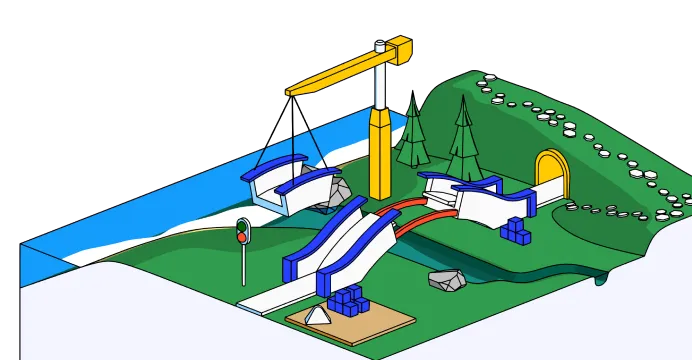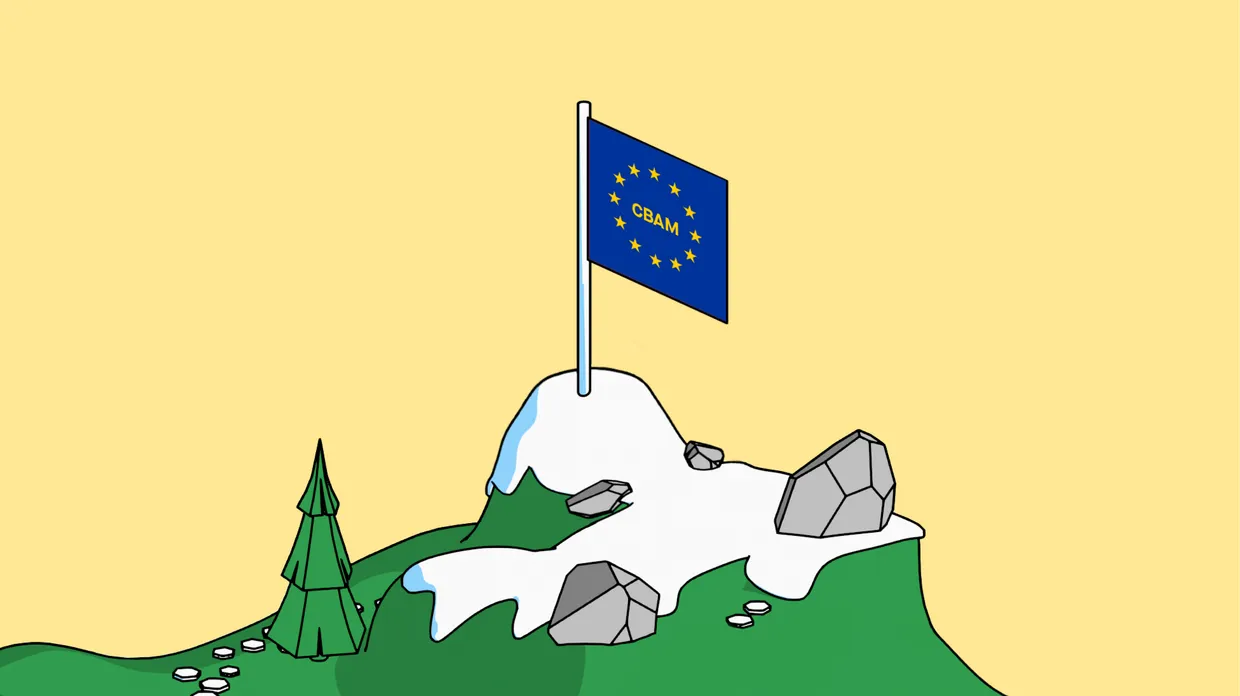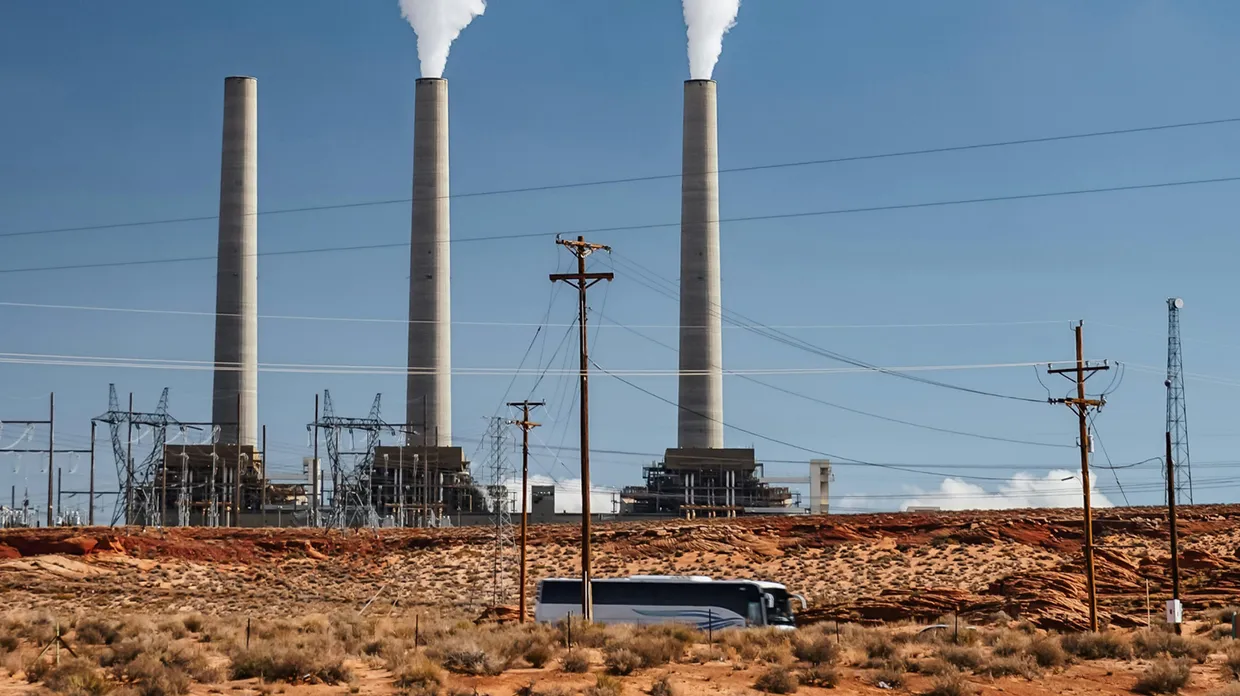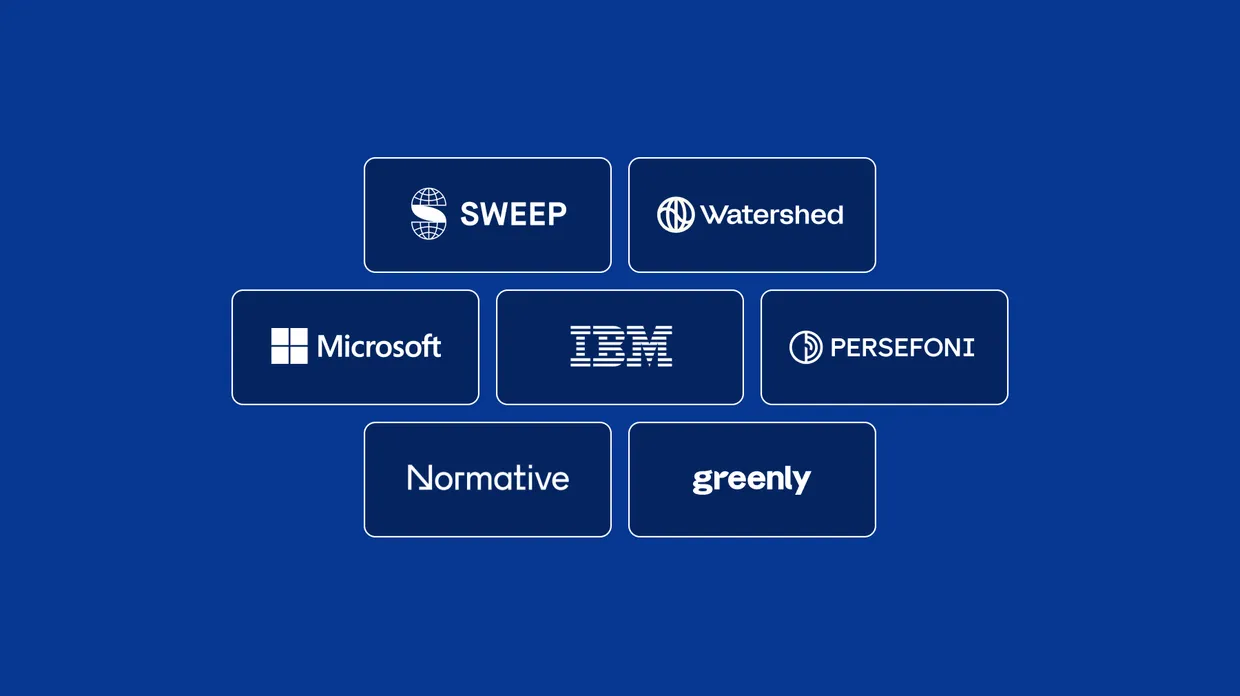Introduction to the Carbon Border Adjustment Mechanism (CBAM)
The Carbon Border Adjustment Mechanism (CBAM) is a revolutionary policy tool designed to reduce emissions and promote cleaner industrial production globally.
By levying a fee on imported goods based on their carbon content, CBAM’s objective is to prevent carbon leakage and encourage domestic industries to adopt more environmentally friendly practices. This mechanism has gained significant attention in recent years, particularly with the European Union’s implementation of CBAM in 2023.
As the world’s largest companies and countries (EU and non EU) strive to reduce their carbon footprint, CBAM is poised to play a crucial role in the global effort to combat climate change.
What is the Carbon Border Adjustment Mechanism, and why should U.S. companies care?
As discussed in our previous article, CBAM places tariffs on selected imports that emit greenhouse gases throughout their production, ensuring a fair price for the carbon emitted. It is designed to reduce global emissions, hold non-EU countries accountable, prevent carbon leakage, and encourage sustainable manufacturing practices.
This initiative will push countries with weaker climate policies to improve. By forcing specific carbon-intensive industries to pay a carbon price equivalent to EU importers and domestic producers, CBAM ensures a fair price for carbon emitted, leveling the playing field.
Unlike a direct carbon tax, CBAM targets direct or indirect emissions from imported goods, ensuring that foreign producers adhere to similar standards as domestic producers. These policies would further the need for robust systems for companies to measure their direct and indirect emissions.
Beginning in 2023, importers were required to report embedded emissions during CBAM’s transitional phase. By 2026, U.S. exporters and other countries will need to purchase CBAM certificates to cover embedded emissions if carbon costs are lower than those of EU producers.
Here’s a bit more detail on what will be required or possible:
- Report embedded emissions in their products.
- You can purchase CBAM certificates if carbon costs are lower than those of EU producers under the Emissions Trading System (ETS).
The CBAM rules apply regardless of your national carbon price, even if there isn’t one, which happens to be the case in the US and other countries. Although this complicates things, no one will be an exception. Understanding the complexity involved is crucial given the high existing trade level between the US and the EU.
To put this into perspective, the transatlantic trade relationship is the most crucial commercial relationship in the world: EU and US trade in goods and services reached an impressive €1.6 trillion in 2023, which means that every day, €4.4 billion worth of goods and services cross the Atlantic between the EU and the US – showing just how prevalent these initiatives are.
Purpose and functionality of the border adjustment mechanism
The primary purpose of the Border Adjustment Mechanism (CBAM) is to reduce carbon emissions and promote fair competition between domestic and foreign producers. By imposing a carbon price on imported goods, CBAM encourages producers to adopt cleaner production methods and reduces the incentive for companies to relocate to countries with less stringent environmental standards.
The mechanism also aims to generate revenue for governments, which can be used to support the green transition to a low-carbon economy. Furthermore, CBAM helps to prevent carbon leakage by ensuring that imported goods are subject to the same carbon price as domestically produced goods, thereby leveling the playing field for domestic industries.
Implementation and adoption of CBAM in the EU
The European Union has taken a significant step towards reducing carbon emissions by implementing the Carbon Border Adjustment Mechanism (CBAM) in 2023. The EU CBAM applies to certain carbon-intensive goods, such as steel, cement, and electricity, and requires importers to report the embedded emissions of these goods. The mechanism is designed to be phased in over several years, with the first phase focusing on reporting and the second phase introducing a carbon price.
The EU’s implementation of CBAM is expected to have a significant impact on global trade and will likely influence other countries to adopt similar measures. As the EU continues to lead the way in climate policy, its CBAM is set to become a model for other countries to follow.
So how does this European policy affect American exporters? Let’s look at the sectors most exposed.
The U.S. industries most affected by CBAM
Some sectors covered by CBAM will naturally fall within its first phase of targets, especially those with high emissions and huge international trade volumes, both domestically and abroad. In the US, these are the ones targeted first, and those most at risk:
- Steel and Iron exports in the US to the EU reached $105.73 million in 2024. This sector is especially emission-intensive, making it especially vulnerable to CBAM regulations.
- Aluminum is a tight-margin sector, so any increase in carbon pricing can significantly impact its competitiveness. It is a critical material for U.S. manufacturers in aerospace and automotive.
- Cement is the most widely used material, accounting for 5-8 percent of global emissions. It is used mainly in construction and infrastructure projects, with U.S. exports growing yearly.
- Hydrogen and fertilizers are rapidly growing sectors crucial to agriculture’s energy transition. These international policies play a vital role in developing low-carbon technologies in this industry. (While hydrogen is not yet officially covered under CBAM, it is under active consideration by EU regulators for future phases.)
The impact of CBAM on global supply chains is significant, as it requires detailed tracking of direct or indirect emissions from production to importation.
Initially focusing on high-emission sectors, CBAM and the EU will inevitably expand to other notoriously wasteful industries like chemicals and plastics, looking toward the future.

U.S. policy responses: CBAM-like regulations taking shape
US lawmakers are starting to shift their thinking and explore policies co-sponsored by various senators that mirror the principles set out by CBAM. These policies aim to reduce the control of foreign nations over global supply chains by promoting cleaner domestic production. The US seeks to protect its national industry by matching what is happening internationally.
The two proposals leading the pack are:
- The Clean Competition Act (Sen. Sheldon Whitehouse, D-RI): The bill aims to create a CBAM to impose carbon fees for reducing greenhouse gas emissions and develop domestic industrial benchmarks. The CBAM would set specific carbon prices that adjust as trends change and use revenues to fund decarbonization initiatives.
- The Foreign Pollution Fee Act (Sen. Bill Cassidy, R-LA): The bill puts a carbon tax on foreign goods with GHG emissions above those of US-made products, but is easier on carbon intensive goods from trade partners. The policy is inconsistent as its basis is trade relationships rather than emissions only, potentially giving an edge to foreign competitors.
There is no clear path set in US legislation thus far, but trade pushed by climate policy will only increase due to its widely accepted assistance in:
- Protecting domestic industries.
- Reinforcing supply chain security.
- Maintaining international leverage against competitors like China.
At the end of the day, carbon intensity will become a core component of staying competitive in our ever-evolving world. The US can adopt its own CBAM or follow what is already in motion, but no matter what, adopting these policies is inevitable, and American companies will have to learn how to navigate this new environment.
While legislative paths are still unfolding, U.S. companies must act now to meet emerging compliance demands.
How CBAM compliance will challenge U.S. organizations
Technology will be a key player in the game of compliance and competitiveness, as CBAM will require importers to report detailed emissions data in order to encourage businesses to reduce emissions. US companies must invest in building and integrating advanced operational capabilities into their existing systems. Here are some key priorities to look for:
- Precise Product-Level Emissions Tracking: Indeed, most US companies have already adopted basic tools to measure Scope 1 and Scope 2 emissions. Still, CBAM requires detailed carbon footprints, including Scope 3 emissions, which demand a more rigorous data collection platform. Companies must accurately report the quantity of carbon emissions associated with their products.
- Supply Chain Emissions Visibility: Many US supply chains are shrouded in mystery, but with the demand mounting to map their carbon footprint, US companies will need to project transparency by releasing detailed emissions embedded in their products from suppliers and contractors.
- Third-Party Verification: Your company should always be audit-ready, as European Union regulators will magnify all details in emissions data. Consistent and accurate reporting is crucial.
- Real-Time Reporting Infrastructure: The rules will inevitably evolve, and with mandatory quarterly reporting to EU authorities during the CBAM transitional phase, businesses will need systems capable of adapting to changing requirements.
Strategic opportunities for U.S. companies
Although CBAM is complex, tackling these policies with an open mind and a forward-thinking approach will give you the competitive edge. In many ways, the US market is well-positioned for success:
- Lower U.S. Carbon Intensity: US manufacturers already have an advantage due to their generally cleaner emissions profile, which companies can leverage to win European contracts. This cleaner emissions profile of U.S. producers relative to foreign competitors provides a significant competitive edge over those with more carbon intensive goods.
- Unlock Green Premiums: Low-carbon products mean buyers will pay more. Studies found products marketed as sustainable grew 2.7x faster than those that were not.
- Future-Proof Supply Chains: Early adoption of emission reduction and transparency will protect you against future regulations. Build decarbonized supply chains now to build resilience against climate-related disruptions.
Beyond corporate strategy, CBAM also carries wider implications for international sustainability efforts.
Global cooperation and sustainable development
The implementation of the Carbon Border Adjustment Mechanism (CBAM) has significant implications for global cooperation and sustainable development. As EU and non EU countries around the world strive to reduce their carbon emissions and transition to a low-carbon economy, CBAM can play a crucial role in promoting fair competition and preventing carbon leakage. The mechanism can also help to generate revenue for governments (particularly in some of the least developed countries), which can be used to support sustainable development projects and encourage cleaner industrial production.
Furthermore, CBAM can help to promote cooperation between developed and developing countries, as well as between countries with different environmental standards. By working together to implement CBAM, countries can promote sustainable development, reduce greenhouse gas emissions, and create a more level playing field for domestic industries.
As the world continues to grapple with the challenges of climate change, CBAM is poised to become an essential tool in the global effort to promote sustainable development and reduce carbon emissions.
How Sweep helps U.S. businesses navigate CBAM
Sweep understands the pressure non EU and US businesses are facing in adapting to CBAM policies, which are increasingly adopted by developed countries. Our platform is the partner you need to meet and surpass carbon accounting and supply chain engagement challenges.
Our platform also considers the unique challenges faced by some of the least developed countries in meeting these stringent requirements.
With Sweep, non EU and U.S. companies have options:
Our platform is the missing link between compliance and gaining a competitive edge. It is time for US companies to be bold, and Sweep helps you seize that opportunity.
In addition to our digital tools, Sweep offers tailored advisory services to help companies embed CBAM compliance into long-term ESG strategy. From border adjustment planning to lifecycle emissions modeling, we act as an extension of your team to meet international standards with confidence. We also support supplier engagement initiatives and carbon data collection across global value chains, giving companies the power to make CBAM-aligned decisions based on real-time emissions intelligence.
The window for proactive action is now, and Sweep helps you stay ahead.
Ready to future-proof your business in the era of sustainability-driven trade? Contact our experts today!





